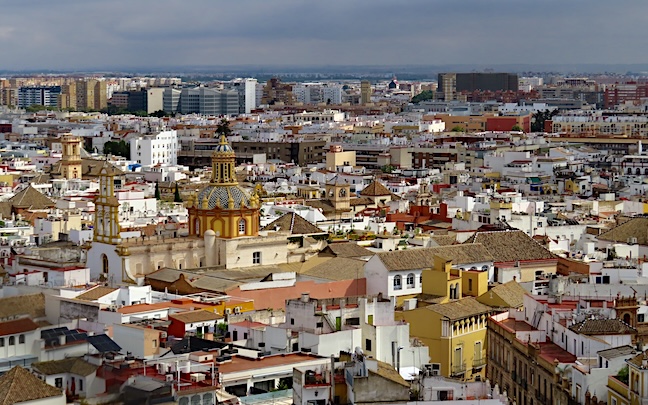Sevilla is Spain’s most walkable city, which is fortunate because most streets are too skinny for vehicle traffic. The everpresent scrape marks on buildings warn drivers to mind their margins.
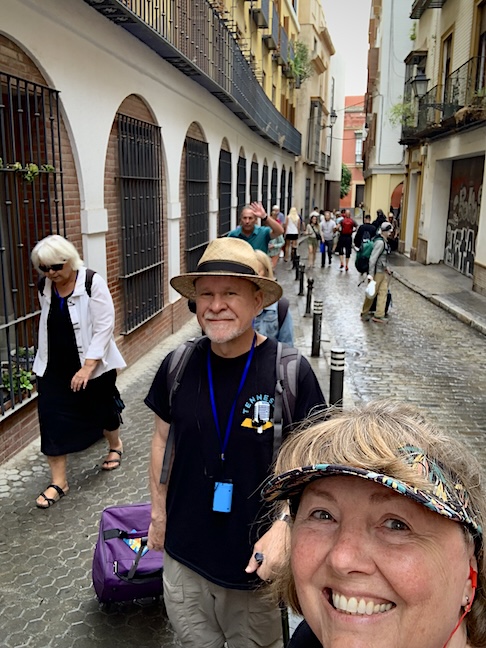
We are staying at the Hotel Amadeus Sevilla in Barrio Santa Cruz, Sevilla’s oldest neighborhood. The maze of narrow streets harks back to Roman architects who never envisioned tourists navigating them with rolling luggage.
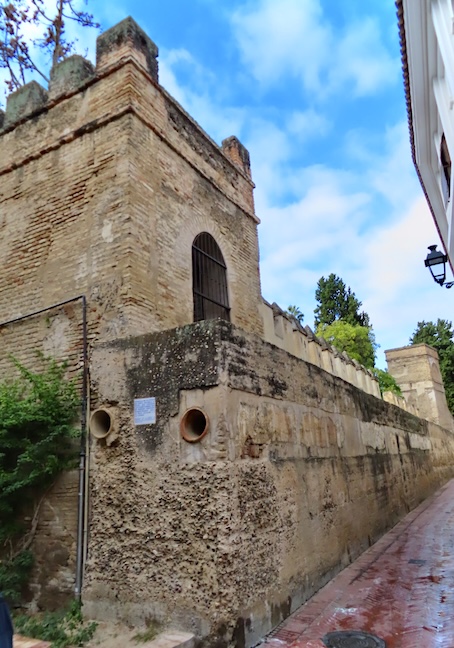
The walls surrounding the Old Town were built during Roman rule between 68 and 65 BC. The remaining segments help guide us while exploring on foot.
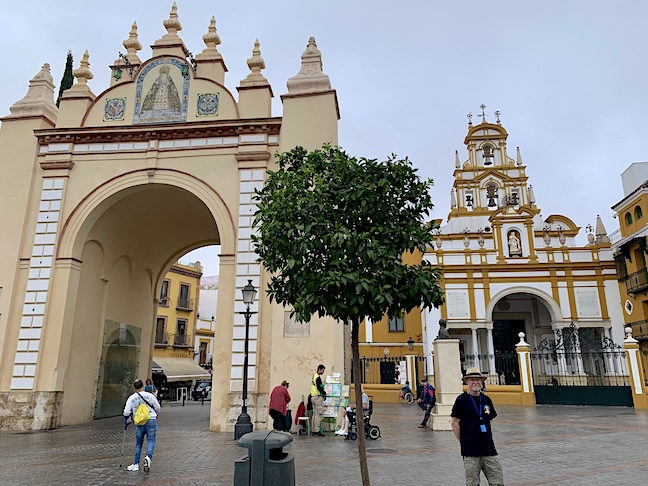
Puerto de la Macarena is one of three original passageways through the ancient walls of Sevilla. It was the preferred gate for visiting kings to enter the city.
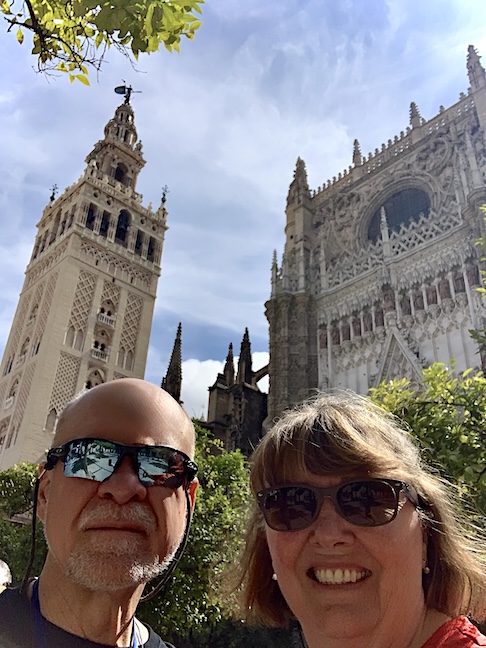
The Catedral de Sevilla y la Giralda is the largest “Gothic Cathedral” in the world and the third-largest church. Best estimates place the amount of solid gold in Sevilla Cathedral at 88,000 pounds.
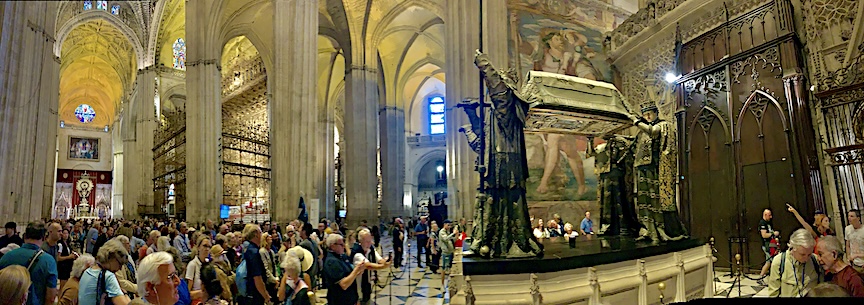
Christopher Columbus died May 20, 1506, in Valladolid, Spain. The intrepid voyager’s body was moved to a Carthusian monastery in Sevilla, then banished from Spain to the Dominican Republic, where he languished for two centuries. Spain relinquished control of the Dominican Republic, and Columbus’ remains were exiled to Cuba for 100 years. The remains are now interred in a lavish tomb near the Sevilla Cathedral’s entrance, resting on four heralds’ shoulders that represent Spain’s kingdoms: Castilla, Leon, Navarra, and Aragon.
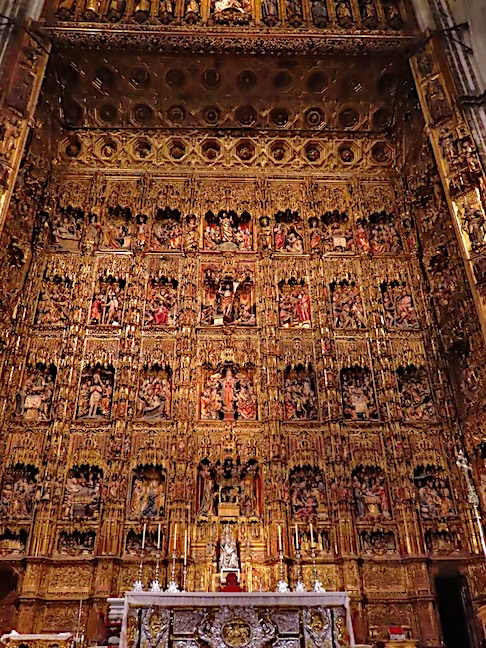
Sevilla Cathedral’s altarpiece is 77 feet high and 66 feet wide, making it the world’s largest. The intricate carvings started in 1481 and were completed in 1565.
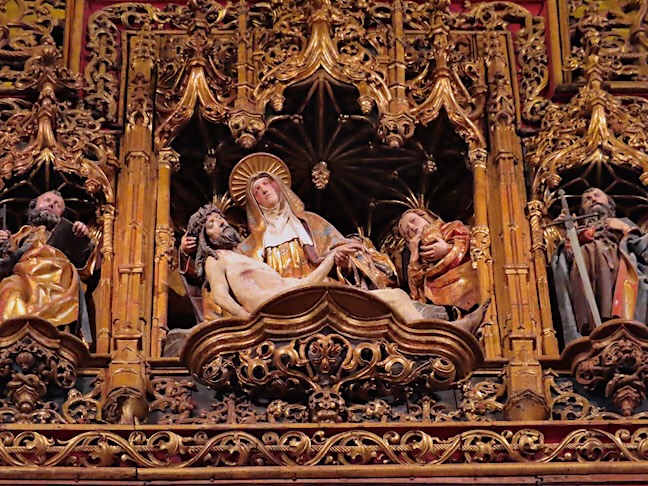
The sculpted scenes depicting Jesus’ life were decorated with gold leaf and painted by many artists, but the majority were created by Alejo and Fernández Alemán. The scope of detail in this work is mind-boggling.
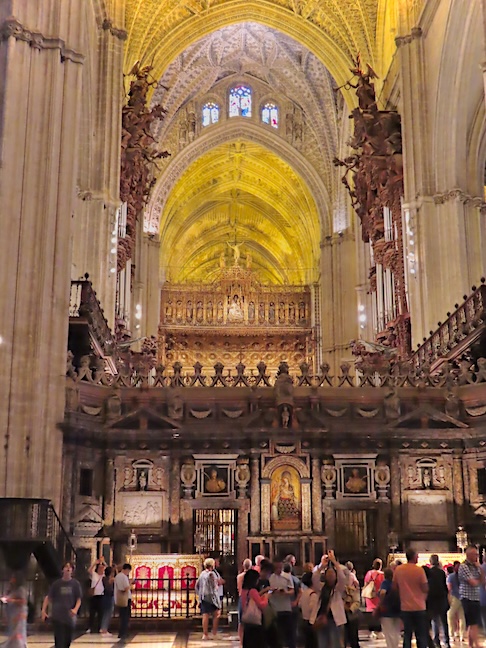
The central nave is Spain’s longest and reaches 138 feet toward heaven. The center of the nave is occupied by the choir with 117 carved seats.
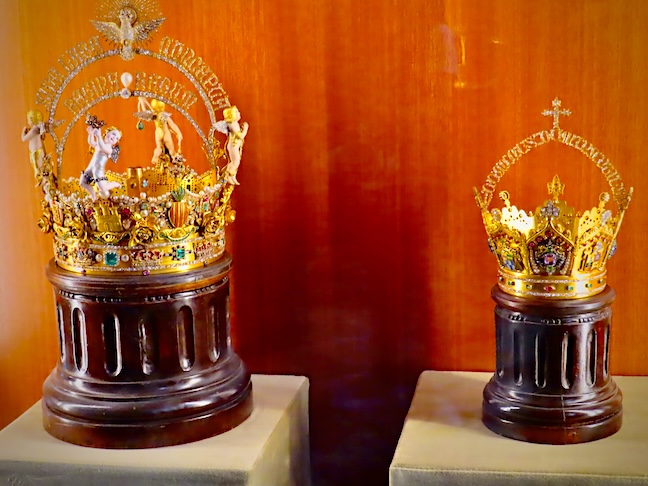
On the left, the Crown of the Virgin of the Kings in Sevilla Cathedral’s Royal Chapel is 22-carat gold with over 11,000 diamonds, sapphires, emeralds, rubies, tourmalines, and the world’s second-largest pearl forming the body of the angel facing us. It is the country’s most valuable crown.
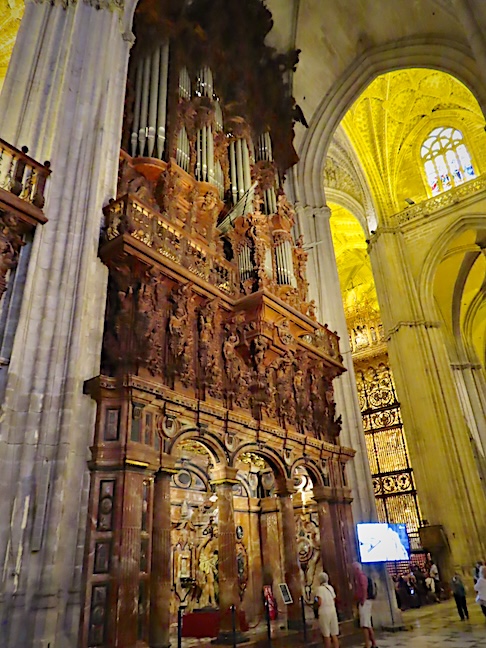
Two organs, one built in 1779 by Jordi Bosch Y Bernat and the other made in 1831 by Valentin Verdalonga are played from one console with four keyboards and one pedalboard.
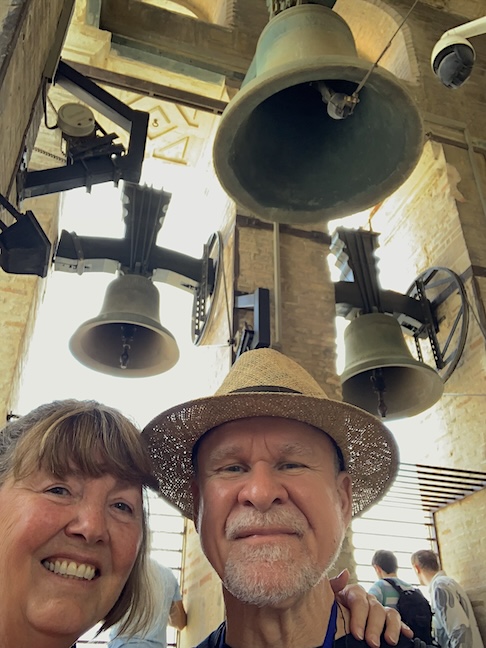
The Giralda is Sevilla Cathedral’s bell tower. It was the former minaret of a mosque built on this site and is 343 feet tall. The largest of the bell tower’s 24 bells weighs 1.5 tons. It contains 35 ramps that made it possible for the sultan to ride to the top on horseback.
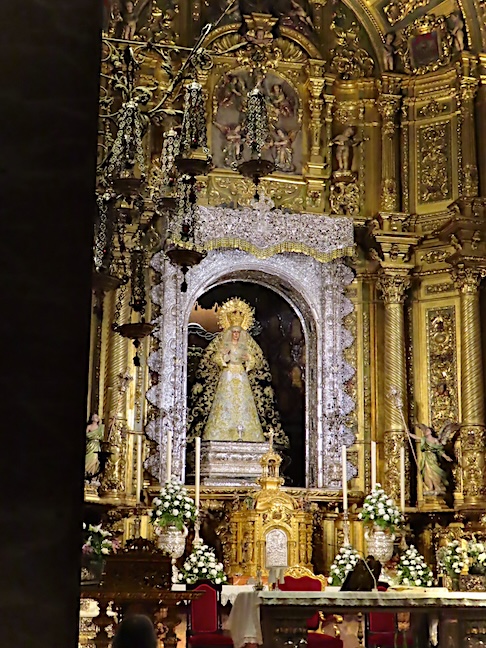
The Basilica de la Macarena houses Sevilla’s famous Weeping Virgin or Virgen de la Macarena. Mary has human hair and articulated arms. Her wardrobe includes three large mantles and underwear.
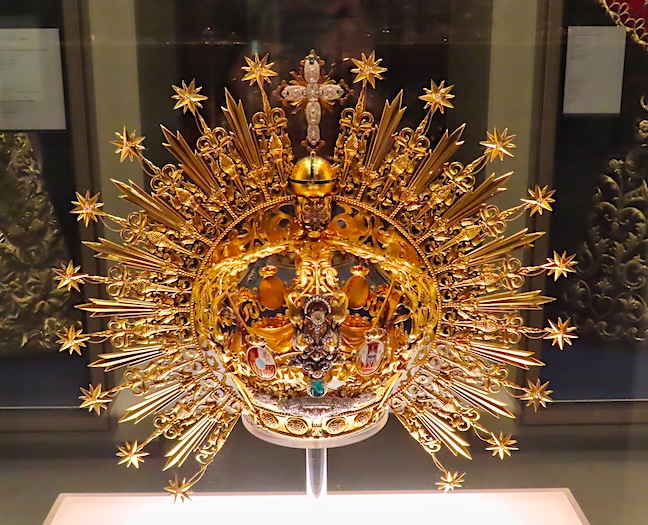
Mary’s crown/halo contains six pounds of gold.
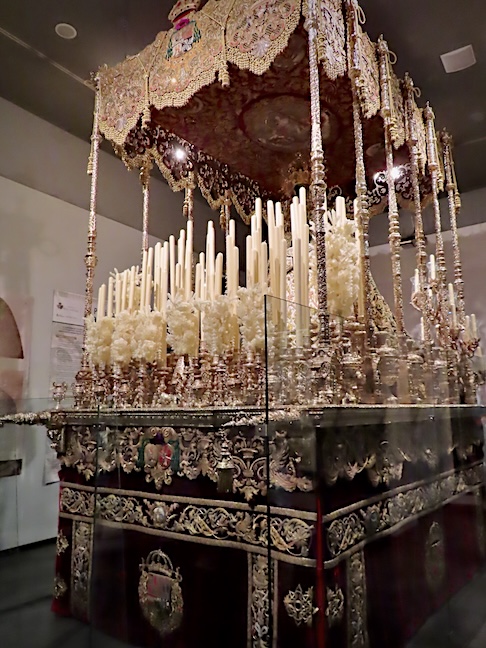
Mary’s 1.5-ton float is hand-carried through Sevilla’s streets during Holy Week leading up to Easter.
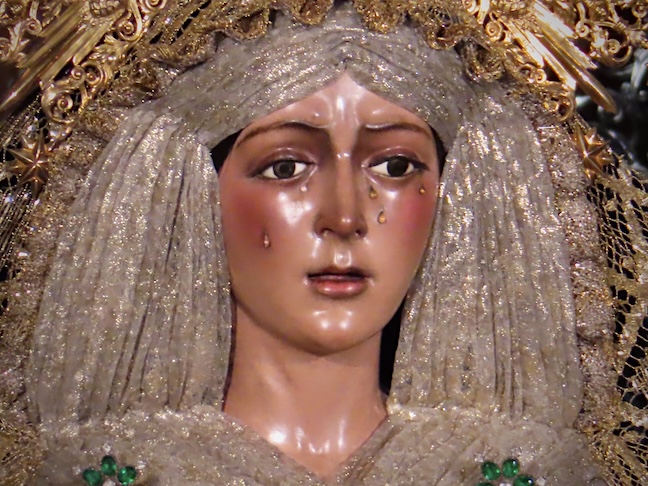
People line up for hours to see Mary’s crystal tears and throw roses as the float slowly passes. Sevillians believe Mary knows their problems and provides hope.
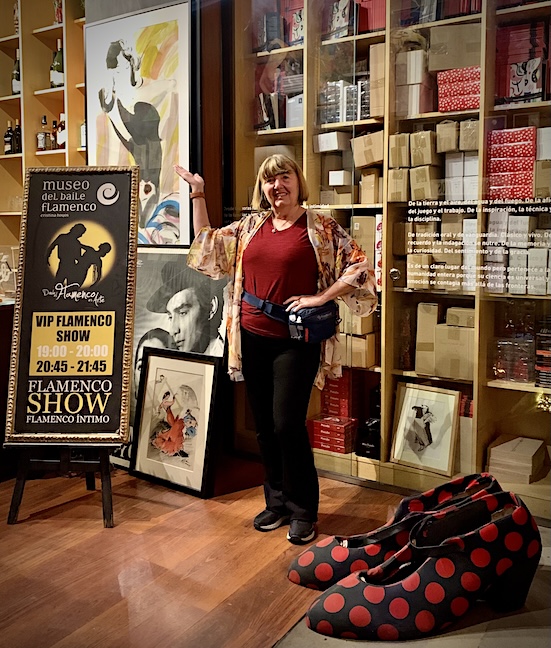
We capped off our first day in Sevilla with a Flamenco show. Gypsies brought flamenco to Spain in the 15th century. Each dance is a unique work of art intended to reflect the desperation, struggle, hope, pride, and joy Andalusian Roma experienced. Unwritten flamenco songs are passed through generations, and musicians improvise to complement the singers’ and dancers’ emotions.

